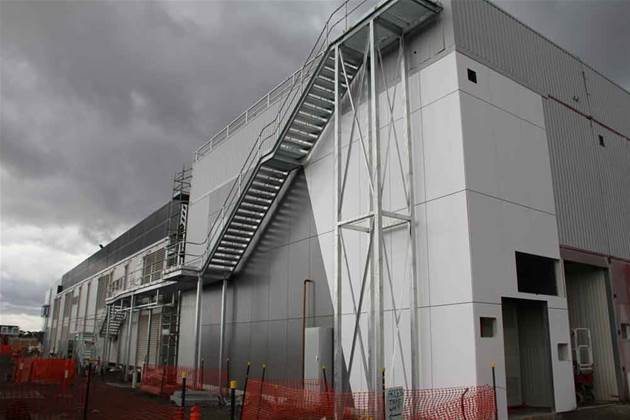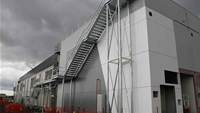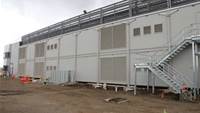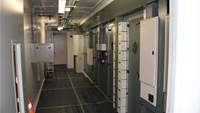Leighton-owned data centre builder Metronode is close to completing the first stage of a world-first modular data centre fit-out in the outer suburbs of Melbourne.
Metronode has signed a deal with British engineering firm BladeRoom to distribute and manufacture its unique design of modular data centre.
Stage One of Metronode’s Melbourne2 data centre [see photo tour] features two halls of seven ‘BladeRooms’ – small, cold-air contained server rooms, each around 15m x 4m.
These can hold up to 30 racks or 26 lockable cabinets of IT kit, which can consume between 100kW and 300kW of power.
Bookending these seven small server rooms on either wing of the building is a row of ‘air optimiser’ rooms which take in, filter and distribute ambient outside air to cool the IT equipment. Hot air is pushed into a separate chamber behind each ‘BladeRoom’, from where it can be released out of the facility via a series of dampers.
Metronode claims that it will only need to rely exclusively on its chillers to cool the IT load for two percent of the year (one week), shooting for a PUE (power usage effectiveness ratio) of 1.16.
Malcolm Roe, general manager at Metronode said this would result in large power saving costs for organisations migrating from legacy data centres with PUEs closer to 2.3.
Roe said Metronode chose the BladeRoom architecture as it is both power and capital efficient. The company only had to purchase enough plant for the N+1 protection of Phase One to serve the facility’s anchor tenants.
Metronode can bolt on data halls and plant rooms as more customers sign up – the only limitations being power (up to 12MW available on the site) and space (up to 24,000 square metres available on the site).
“We have halved the rollout time for a data hall from nine months down to four months,” he said. “It’s also capitally efficient in that we aren’t cooling acres of white space.”
The Melbourne facility is the first time a BladeRoom customer/partner has stacked data halls on top of each other for maximum density.
Metronode already has the downstairs data hall committed with a large IT service provider and a cloud computing provider, and is in negotiations with a government client to take most of the upstairs hall.
Work on Phase Two is expected to start within months.
For more tech specs, see iTnews’ photo tour of the facility.








.png&h=140&w=231&c=1&s=0)
_(22).jpg&h=140&w=231&c=1&s=0)




_(26).jpg&w=100&c=1&s=0)

 iTnews Executive Retreat - Security Leaders Edition
iTnews Executive Retreat - Security Leaders Edition











_(1).jpg&h=140&w=231&c=1&s=0)



